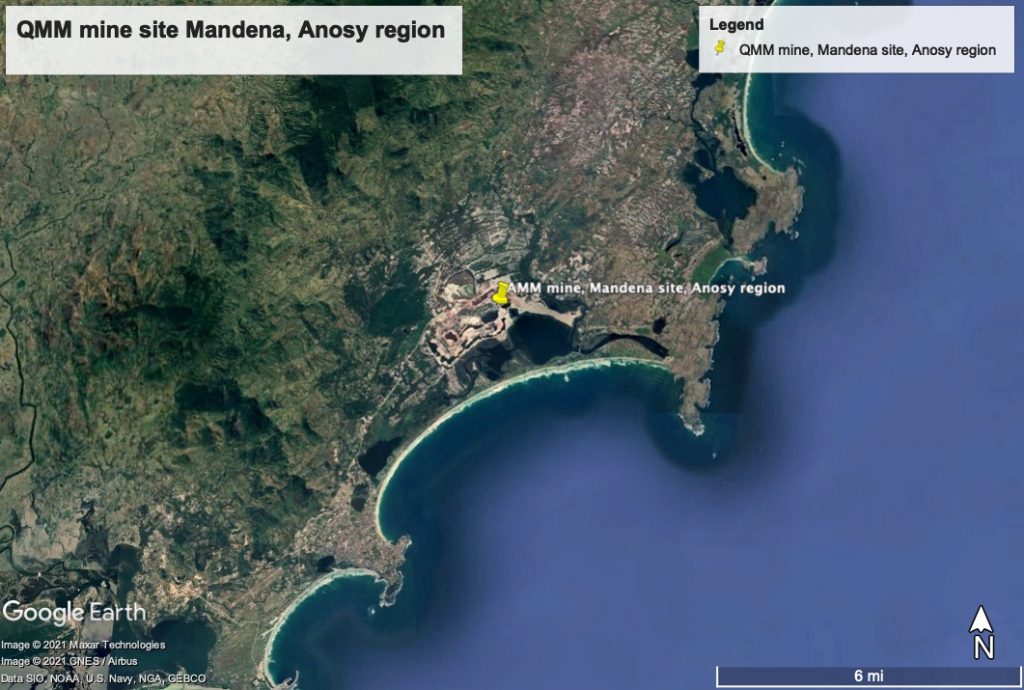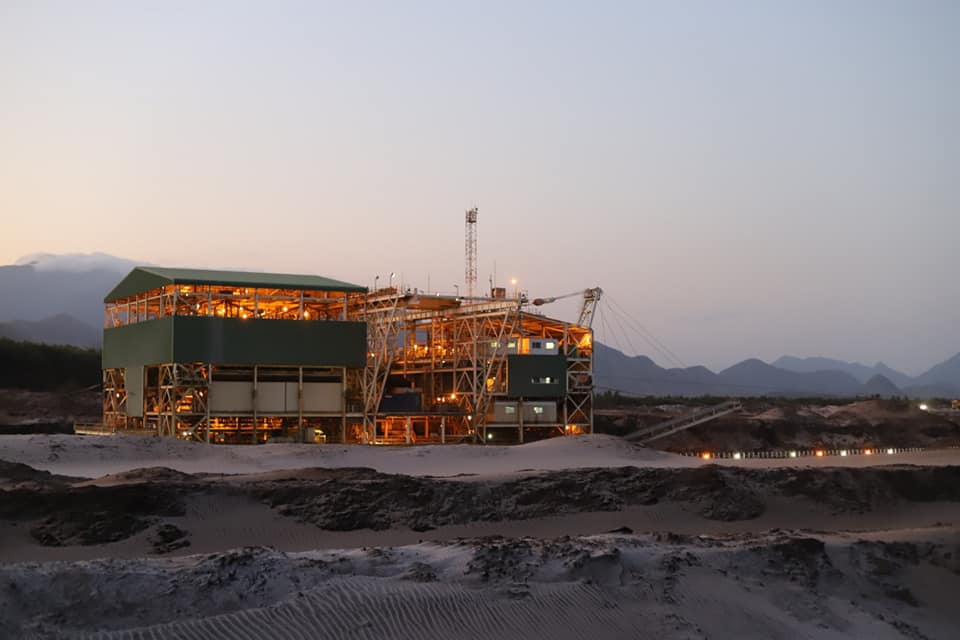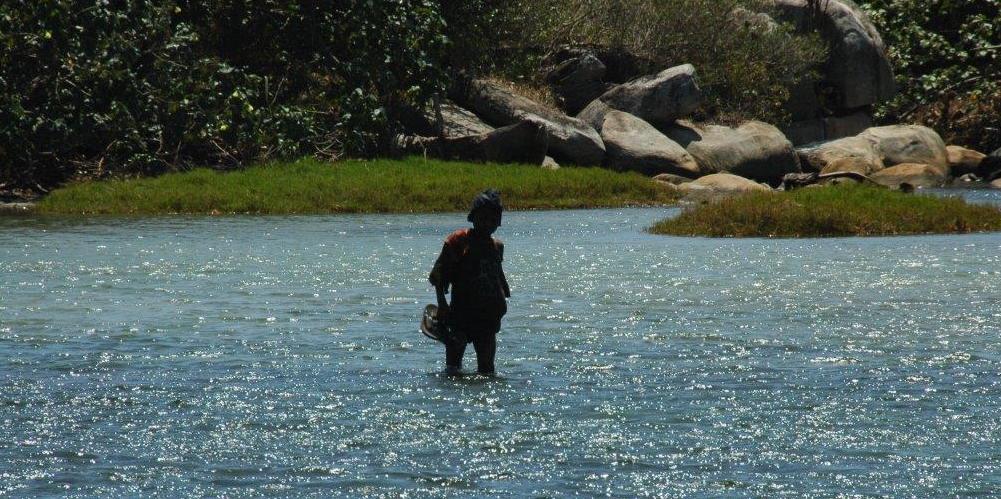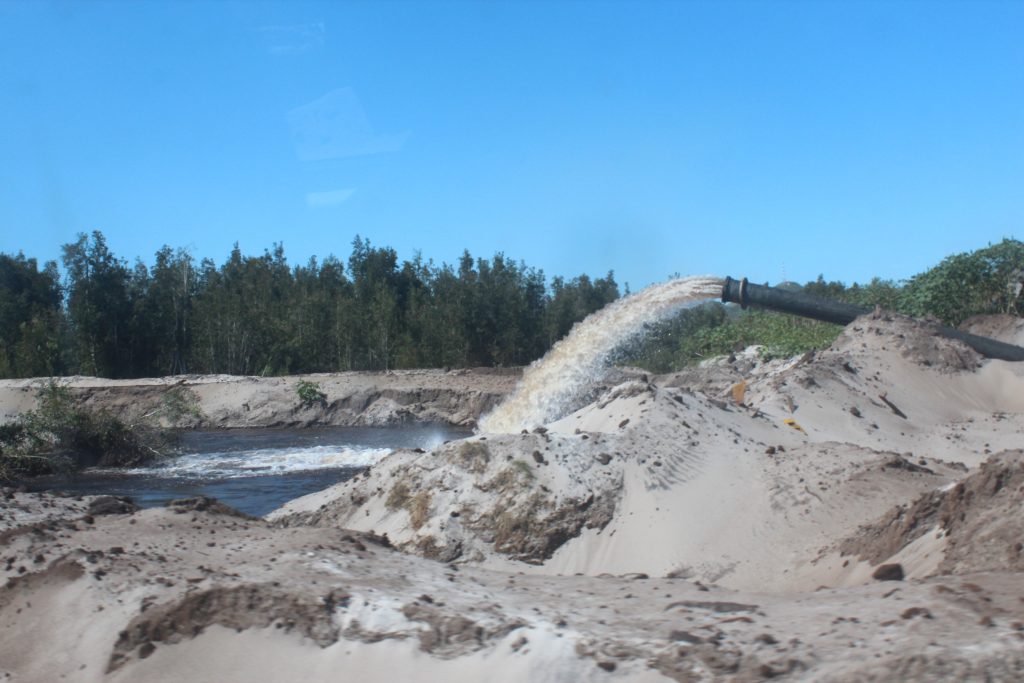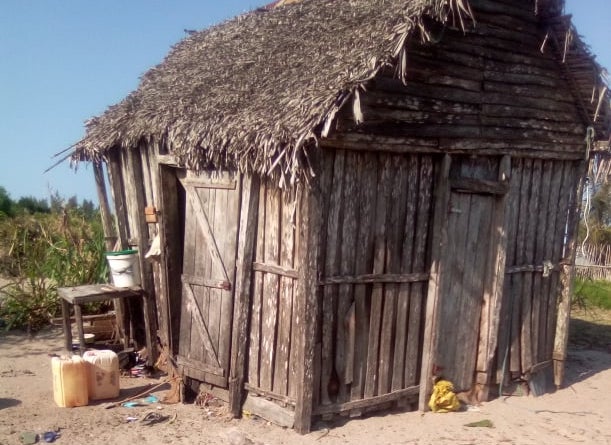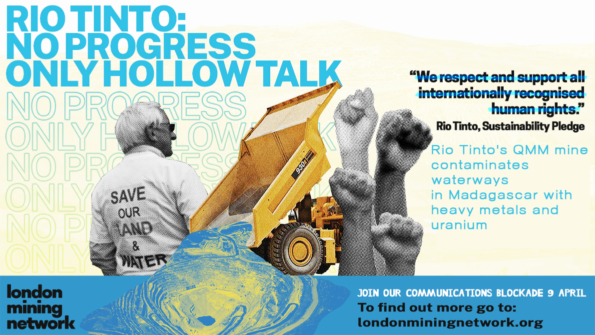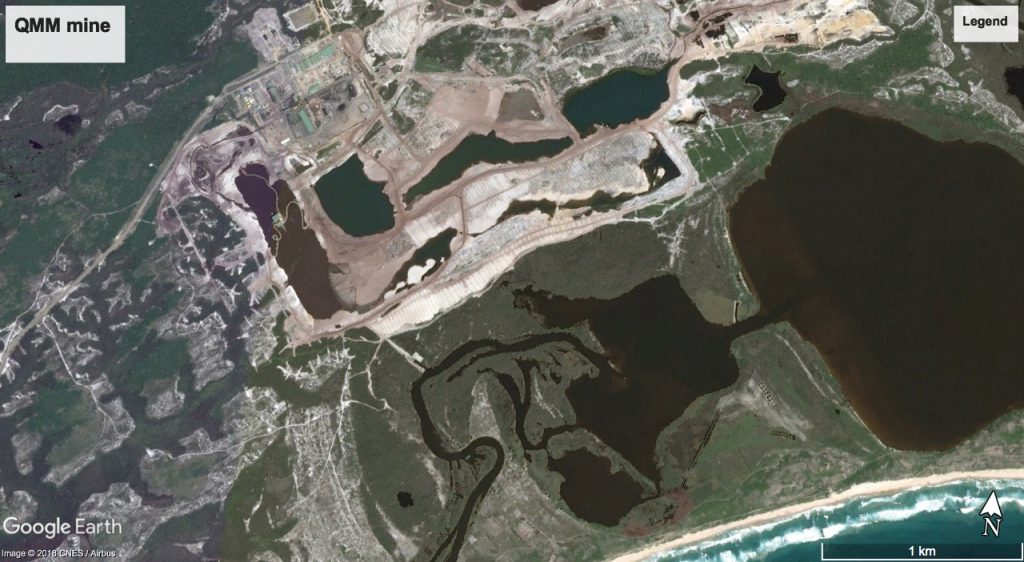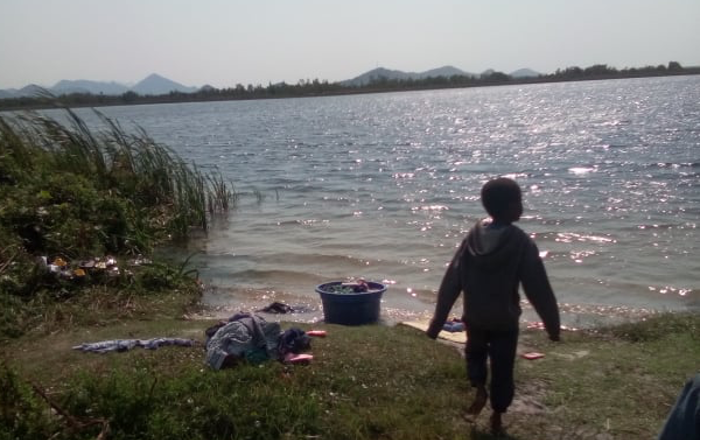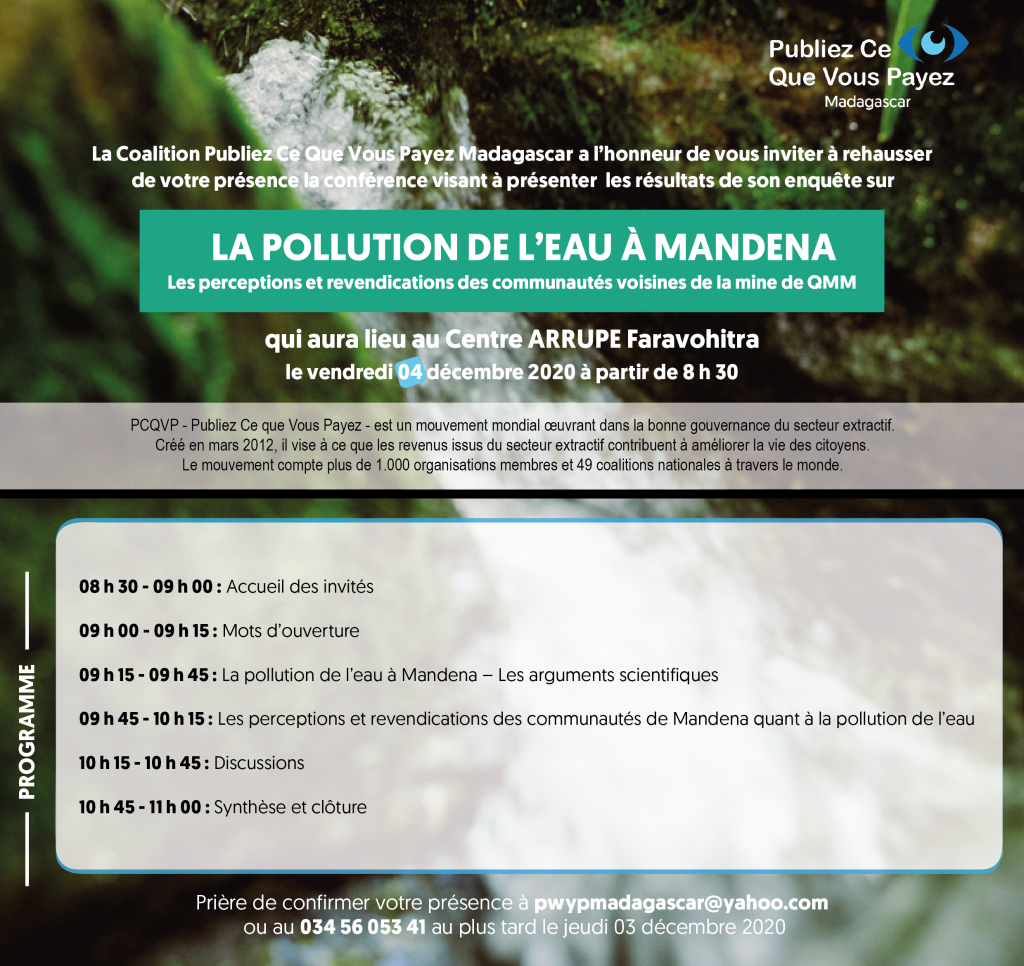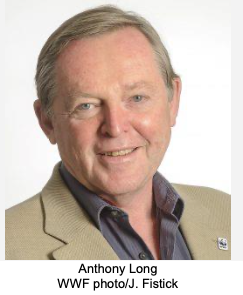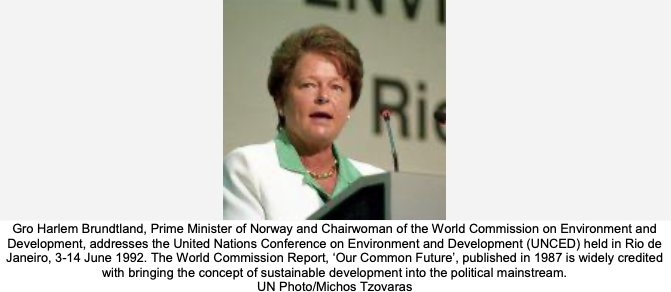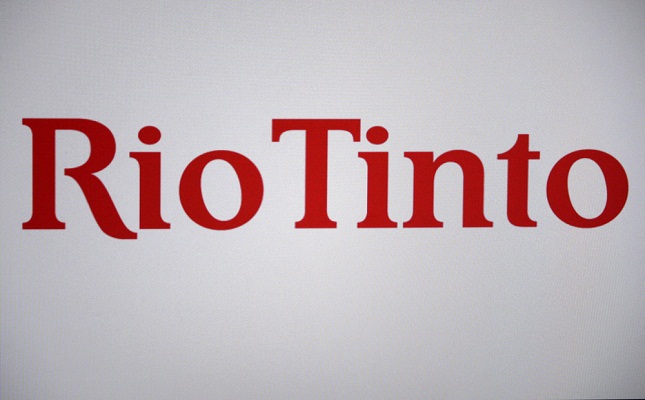
The AGM of Rio Tinto took place on Friday 8th April in London. It was hybrid meeting ( in person and online) and the Director of Andrew Lees Trust (ALT UK) participated in person to raise questions about the QMM mine in Madagascar, together with Joe Bardwell of Publish What You Pay (PWYP), which is supporting the PWYP Madagascar (MG) research and advocacy efforts for Antanosy communities on the frontline of the mine.
We report with a transcript of the Q&A with our comments to some of the responses from Rio Tinto about Madagascar below, and in order of the questions asked.
FULL AGM RECORDING AVAILABLE HERE
The timelines for the Q&A relevant to Madagascar are located next to each question, and presented thematically and in order below including:
- Social and Political Licence to operate
- Transparency and communications
- Dam Safety
- Rights and Remedy
- Water Provision
SEE REUTERS PRESS COVERAGE HERE
BACKGROUND: Since 2018, PWYP MG, PWYP UK, ALT UK and Friends of the Earth (EWNI) jointly advanced a series of advocacy actions with regard to the QMM mine, notably to bring to light QMM’s illegal breach of an environmental zone, followed by demands that Rio Tinto/QMM resolve its water management system, increase transparency around the mine and, most urgently provide drinking water to mine affected communities around the Mandena site. These demands also relate to studies that identified of elevated levels of uranium and lead downstream of the mine.
Recent events around the QMM mine, with the appearance of dead fish following mine tailings dam failures, and a massive mine process water release, have further highlighted and accentuated the need for robust scrutiny about the impact of the QMM mine on the local environment and specifically the local waterways and water quality
SEE MORE INFO ABOUT RECENT EVENTS HERE
We acknowledge that Some steps have been taken by RT/QMM in the last year, and go some way to meet demands made by our advocacy group since 2018, namely:
1) QMM has finally committed funds to advance drinking water access (filtration systems) into the three communes (targeted to increase access to drinking water).
2) Rio Tinto/QMM have conceded that the QMM water management system is not working have set about scoping solutions – specifically they are advancing a “temporary solution” (though this raises questions and requires further study – see below Question 2 )
3) Rio Tinto have now publicly committed to finding and sharing water baseline data that has been requested for more than three years. Our advocacy group was repeatedly told there were no baseline data. This data is critical to understanding how the mine has changed water quality in the region. These baseline water data have become increasingly pertinent following the recent mine tailings dam failures at QMM.
SEE BRIEFING PAPER HERE
The water quality issues remain contested. The claims that Rio Tinto/QMM mine has no impact on the receiving environment is still in question and current analysis – both by QMM’s external provider’s JBS&G and the local authorities in Madagascar – are proving scientifically unsatisfactory in credibly answering to the issues arising.
Many social issues remain unresolved, and the latest study by PWYP MG shows communities around Mandena most affected by the mine are suffering extreme hardships from loss of lands and livelihoods, such as represent almost a 50% decrease in their quality of life /income from before the QMM mine started.
SEE PWYP MG 2022 STUDY BRIEFING HERE
Since the premise of the Rio Tinto/QMM mine as a centrepiece of the World Bank Integrated Growth Pole (PIC) programme in the south was that it would lift the Anosy region our of poverty, this result – the deepening poverty and suffering for the rural populations – is a notable failure of the project and needing urgent attention.
QUESTIONS RAISED AT THE AGM 2022 ABOUT MADAGASCAR : –
There follows a TRANSCRIPT of the Q&A with ALT UK comments inserted
I. QMM’S SOCIAL AND POLITICAL LICENCE

46.00 – 47.22: Power, Trustee for the Jesuits of Britain, a Catholic Church Trust and institutional investors in Rio Tinto :
My question takes to Madagascar where there seems to be strong indications that the company may be losing – we talked of strengthening its social licence, but is it losing it there? It’s relating to mine affected communities at the site in Mandena. We understand many villagers have been the in the Town Hall occupying it recently, and the reported losses of their incomes is as high as 50% – and just recently, last week the Government of Madagascar in the person of the President talked of holding QMM (Rio’s subsidiary there) responsible for the impact of the failure of the dam structure, death of aquatic life and the water quality issues. So, my question is: is QMM now at risk of losing its political licence to operate in Madagascar?

47.23 – 54.28: Simon Thompson (ST) , Rio Tinto, Chair:
This relates in part to the recent report from PWYP MG which have not read yet. First when you build a mine in a very poor country like Madagascar, one of the poorest in the world, it does create inequalities. Because before the mine everyone was uniformly poor and when the mine arrives and creates well paid jobs it increases inequality in the community and this is an issue that mining companies confront whenever they are developing project in poorer countries. So, the reality is that in Madagascar with the arrival of QMM we have created well over 200 well paid direct jobs and produced employment connected to the mine and supply chains of about 11,000. When we developed the mine we brought clean water to Ft Dauphin – nearest major town to the operation, where many of our employees live. We then handed that clean water facility to the govt, and we are currently building clean water facilities for three rural communities located much closer to our mine.
ALT UK Comment: The inequality exists but in fact it is the diminished livelihoods of the rural poor in the region , those living adjacent to the QMM operation, and suffering directly as a result of the mine that is the issue. Only about 2% of the rural communities interviewed have jobs with QMM. The local CSO Platform in Anosy reports two water supplies in Ft Dauphin. One for citizens and one specifically for QMM, the port and QMM’s worker base (As shown in the QMM 2007 plans) . See diagram below
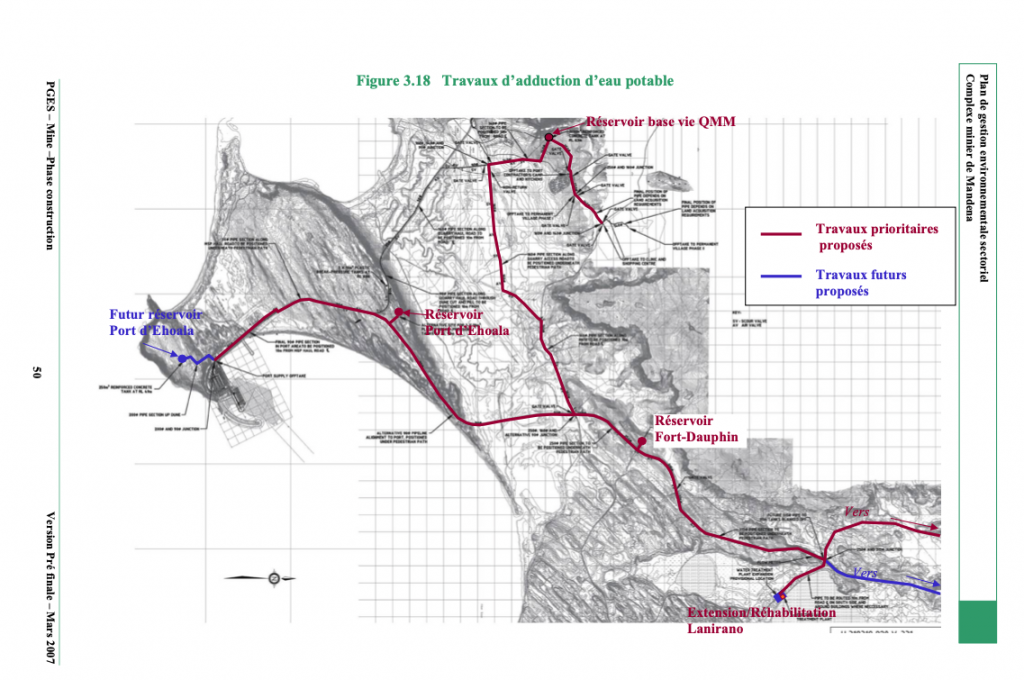
S Thompson/ Rio Tinto : But the reality is there is a divide between the urban population in Ft Dauphin who benefit from electrical power that we supply to 80,000 people and to clean water and jobs whereas the rural communities nearer to the mine do not share in those benefits fully. This is why we are really focused on working with stakeholders including the World Bank who have taken an active role over many years now in seeking to develop a regional development programme to try and redress that balance.
ALT UK Comment: There is no sense of any benefits for over 90% of the rural population impacted by QMM (PWYP MG 2022). The World Bank PIC Phase 2 is focused on supporting local entrepreneurs, which does not directly address the reduced subsistence livelihoods of the impacted rural communities in question. In particular, it is the lost lands and diminished natural resources as a result of the QMM operation that is most impacting the rural poor (ibid).
S Thompson/ Rio Tinto, continues: We will never be able to do it in full but we can strive to do so for example we are converting our power generation in Madagascar to renewable using solar and wind and when we complete that we will be supplying not only the power to Ft Dauphin but also be able to supply power to two of the rural communities that are close to the operation. We do recognise that we need to step up our engagement with the communities we have put a tremendous amount of effort into doing that over the past year or so and we feel we are building better relationships not just with civil society orgs in Madagascar, but also directly with those communities.
ALT UK Comment: Power supply alone will not address villagers land and livelihood losses. Villagers were protesting lost fishing livelihoods as recently as December 2021 with road blocks, and two were arrested. QMM sought to criminalise/penalise the leaders of the protest. In March 2022, villagers occupied the Town Hall to demand remedy to their situation, having been left with no access to the lake following a mine overflow incident– and thereby no fishing livelihoods to ensure their survival.
S Thompson, Rio Tinto continues: It was the Ministry of Water in fact who made the comment about holding QMM responsible for some fish deaths near to our operations.
ALT UK Correction: Wrong. The Minister of Water delivered the President of Madagascar’s message: This message is summarised as follows: “QMM has already worked here in Anosy 25 years ago. During these years, you have encountered various problems caused by the extraction of ilmenite from QMM. Since I was the President of the transition, I have already thought about protecting you for this situation. Currently, the natural waters (rivers and lakes) are all polluted, the fish found dead, you can no longer work. The QMM is responsible for all this because Only QMM extracts ilmenite here in Anosy, only QMM discharges wastewater into the river. So QMM is responsible for all of this. We will have to find solutions for the protection of the community”
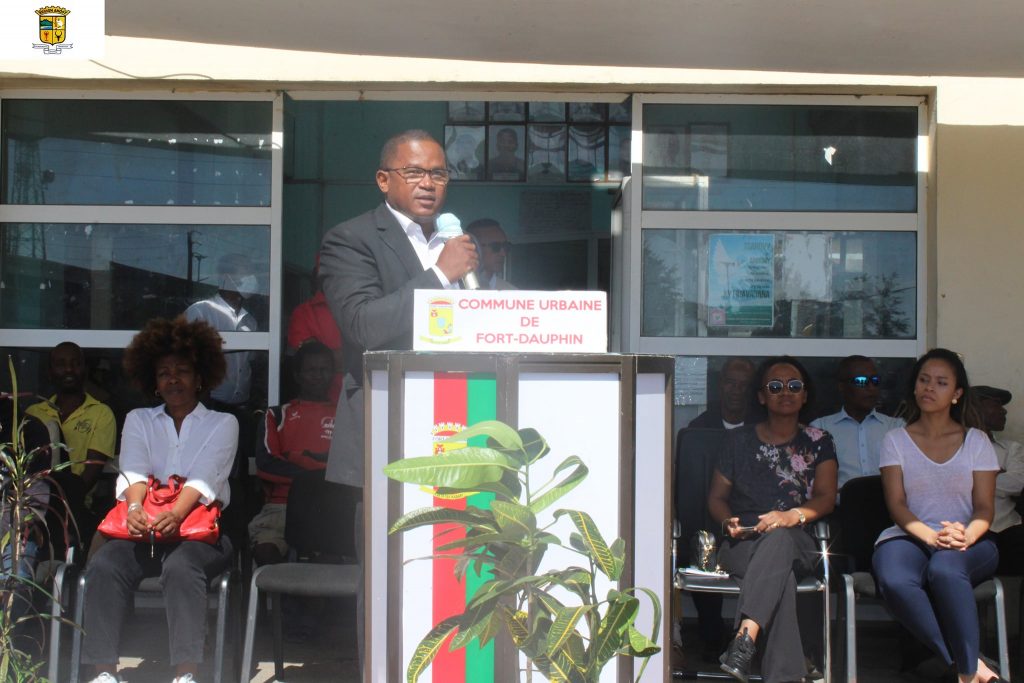
SEE TV MEDIA AIRING OF THE MESSAGE DELIVERY HERE
S Thompson , Rio Tinto : It’s quite hard to answer this question concisely because it is a complex story. But Madagascar in the early months of this year suffered dome extreme weather after a very prolong drought. In Feb -March there were three cyclones in a matter of weeks which deposited about half the typical annual rainfall in a very short period of time. Our operations are essentially ponds in Madagascar and our normal procedure is to keep the level of the water in those ponds below the level of the water in the external environment so that should there be any flow of water it will be from the external environment into the ponds rather than vice versa.
ALT UK Comment: Madagascar frequently has cyclones. The QMM mine has built 30m high, 4-metre-high berm – with the function of a dam, to prevent flow of water into or out of the mining pond. That this dam structure failed under the heavy rains is an issue. It is not the first time. See also below Question 3 :QMM DAM SAFETY
S Thompson , Rio Tinto: However because of this exceptional extreme weather we got an accumulation of water within the pond areas and we therefore had to release some water into the external environment – something we have not done for well over 18 months – and we did that with the full permission of the National Environmental Office ( ONE) and indeed we involved local communities in that , and as a precautionary measure we provided the local communities near the mine with clean drinking water whilst we were releasing that water into the environment . Now, several days later there were some fish deaths reported actually not very close to where the water was released but further out in the waterways which we investigated because we take that very seriously.
ALT UK Comment: What is not explained: release of “some water” means QMM had to get “exceptional” permission to release 1 million cubic metres of mine process wastewater. “Exceptional” permission was required because since 2020 QMM mine process water has been reported as not compliant with Malagasy water regulatory limits for discharge into the environment ( with exceedances of cadmium and aluminium). ANDEA, the water authority attached special conditions to this release – see below in Q:3, QMM DAM SAFETY and ANDEA PERMISSION HERE
S Thompson, Rio Tinto: And working again with the ONE we tested those fish, we found no signs of toxicity, we found no signs of contamination with heavy metals so I’m afraid their deaths aren’t explained but I have to say the local fishing community and indeed our staff reported that the water was extremely turbid, which is not surprising because of the vast quantity of flood water which not only caused enormous damage to local communities but also washed a huge amount of sediment into the waterway where the fish were found. So, we were surprised by the Minister’s comment because certainly the analysis we have done and the analysis the ONE in Madagascar has done doesn’t suggest there is any link with our activities. But certainly, it’s something we take extremely seriously and we will continue to engage with the Minister of water and try to understand what if any steps we should take.
ALT UK Comment: Hundreds of dead fish were located in the lake – downstream of the mine, where locals fish for food and livelihoods. As fish live in moving water there is no saying exactly where the deaths took place. The study reports of the water testing by the authorities are in question. The analysis is far from adequate to draw conclusions and more investigation is needed.
SEE SWANSON MEMO ON THE LOCAL STUDY REPORTS HERE.
ALT UK Comment: The death of the fish is most likely explained by the combination of high aluminium and low PH which is present in the QMM mine basin water, and which would have been released in quantity. This combination can cause asphyxiation in the fish. However, other metals of concern also need further investigation.
S Thompson, Rio Tinto: I should say, and it’s a long answer but it’s a complicated subject, that we are about to open a water treatment plant at QMM which will actually provide a permanent long term solution to this…….so it will enable us to release water rather than doing so in sort of emergency situations such as we face because of these extreme weather events – we will be able to release water back into the environment which will be at least as good if not better than the quality of the water in the receiving environment. So, we do have a permanent solution.
ALT UK Comment: RT/QMM shared papers with ALT UK and PWYP MG the day before the RT AGM. The plan being proposed is a pit treatment process to address elevated aluminium and the low Ph and is signalled as a “temporary solution” in another document, pending a “permanent solution” expected in 2024. Whether the permanent solution is this same treatment plan after a two-year experimentation in situ is yet to be clarified. The word experimentation refers to the fact that a) there is no EIA, risk assessment or SEMP available data to determine to what extent the plan has been modelled, tested and reviewed for any necessary risks and mitigation mechanisms for the Malagasy situ/location and, b) it has not been subject to public consultation in Anosy, as would be expected for a change in design of the QMM project design.
ALT UK Comment: One risk of the proposed treatment process is that neutralising the high aluminium and low PH with limestone creates Aluminium Hydroxide, a toxic sludge which if release via cyclonic conditions could potentially kill everything in the lake environment. We note from exchange with experts that this is the cheapest and easiest solution to the aluminium/Ph problem – in fact a proper water treatment plant costing in the order of 20 million dollars, 10 times more than the proposed plan, would be more appropriate for the QMM scenario for the longer term.
ST, Rio Tinto: As I mentioned we are also developing clean water projects for the communities living close to the mine, which again will address some of their concerns. But I absolutely accept that we have work to do to enhance our licence to operate in Madagascar.
2. TRANSPARENCY AND COMMUNICATIONS
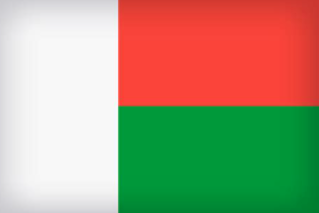
1.7.35 – 1.10 : Tahiry Ratsimbahoatra
Introduced by Yvonne Orengo, Director, Andrew lees Trust (ALT UK )We work closely with PWYP MG and PWYP Intl, and PWYP just brought out the report that Mr Thompson just mentioned. Unfortunately a community rep from Mada was not able to attend today because of Covid: I am bringing a question from him: Tahiry Rastsiambahoatra is an Antanosy man from the region where the QMM mine is situated. His question is about the Transparency of Rio Tinto’s communication which he says creates a feeling of betrayal vis-à-vis the local community and QMM in Madagascar: for example, • 2001: QMM said their WEIR would improve water quality in the Lake Ambavarano, but fisherfolk report a 90% loss of fish species in the lake since the weir was built – and have protested due to their lost livelihoods • 2001 QMM said it would not exploit monazite because of its high radioactivity, now QMM exports Monazite and takes it through town• 2017 QMM said it was compliant on the buffer zone limits. But, after two years late Rio Tinto admitted QMM had breached the environmental buffer zone; rural communities take drinking water and fish in the local lakes directly affected by QMM mine process water and the contamination it brings. Q: when will QMM communicate transparently to avoid the widespread distrust of the community? …
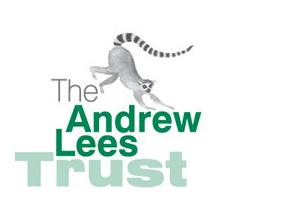
Added from Yvonne Orengo (ALT UK)
I want to add that QMM told us for years – our organisation with PWYP have been asking a lot of very technical questions about water quality in Madagascar – we were told there was no baseline water data. But now we discover there is. We are still waiting for it. People were told there was no problems with QMM mine water; they are still being told that. But when pressed to disclose its discharge water data, QMM had to admit last year to exceedances in cadmium and aluminium. We concluded the QMM water management system was not working; QMM and Rio Tinto had to concede this is true. It also has high levels of uranium and lead but QMM does not like to discuss these and the absence of a regulatory limit for uranium in Madagascar means they haven’t had to – yet. Civil society was told that QMM was looking for solutions for the discharge water – and you have mentioned them today Mr Thomson – I was delivered papers yesterday and announcements in MG press were made about this last week, only last week. In fact, they are a temporary solution, not a permanent solution, and they were scoped out last year – but nobody knows anything about it. It’s a solution that creates even greater risk to the water environment and consequently to health and the subsistence livelihoods of rural communities living around the mine. Q. Why has there been no transparent discussions about this treatment solution? It’s a neutralising pit solution – we’ve been asking for information for over a year? Where is the EIA and Risk assessments? and where are the public consultations which should then accompany those and which are required for a change in the project design in Madagascar? Why does Rio Tinto allow QMM to continue to do, as the villagers put it: “what it wants”, without transparent processes and open communications? is Rio Tinto really willing to change its culture? – because this way of operating in Madagascar is not conducive to building trust and or to the transformational changes it is aspiring to

1.11.55 : Simon Thompson, Rio Tinto:
This is my last London AGM. You have asked a question about Madagascar at all eight of the AGMs both virtual and in person so I want to acknowledge ALT commitment to holding Rio Tinto to account and hope you will concede we have always been responsive to all your requests. You have made 5 meetings with management; you’ve made 17 or 18 detailed requests for information which we have endeavoured to provide. You have mentioned baseline and we will provide that, but the difficulty is that if you ask at short notice for data that is 27 years old we have to go back into the archives and get that data. In terms of meeting, you personally on developments at QMM, I know Jakob offered 3-4 different dates to meet ahead of this meeting regrettably you weren’t able to meet those times. That offer remains open.
ALT UK Comment: The Chair did not answer the question about the lack of an Environmental Impact Assessment (EIA), public consultation or risk assessment for the new treatment “plant” or pit. These latter are specific steps required under Malagasy law and essential for a transparent process around the project activity and any changes to its design. Failure to conduct full public consultation is one reason local people feel QMM is lacking transparency and this in turn undermines trust.
ALT UK Comment: Baseline water data has been requested from Rio Tinto/QMM for more than three years. There is absolutely no short notice to speak about. If water monitoring was happening as expected at QMM, this baseline data would have been a constant point of reference, readily available, since the project began.
Multiple questions posed to RT/QMM on technical matters since 2018 remain unanswered or ignored. We have been in a dialogue process with Rio Tinto since 2017 and the company executives know exactly what high-level meetings have not been delivered as promised (e.g., during all of 2020) and when requested (e.g., November 2021). We welcome all data that has been provided and discussions, and will continue to engage with the company to press for greater transparency, relevant data and appropriate action.
S Thompson, Rio Tinto: So, you are right the water treatment plant was developed in response to those exceedances that we have seen in cadmium and aluminium in the water that was released from the mine into the environment and that is why we stopped releasing water from the mine into the environment for 18 months whilst we were constructing the treatment plant that should come on stream very shortly. You are not right that uranium and lead is also an issue there is no evidence there are exceedances of uranium or lead from the mine, although I know that has been a consistent concern of yours and that is why we conducting the fifth water quality study , this is being conducted by an independent Australian expert in radionuclides and heavy metals and they have now completed their interim report – it has to go first to the national office if the environment in Madagascar for their approval, we are also getting it peer reviewed but the draft report that we have seen, there are no exceedances of uranium or lead or other heavy metals. They are within the WHO guidelines. This is the fifth study that we have conducted because you have persistently raised this issue with us and clearly it is a difficult thing to prove a negative – you are alleging that we are harming the environment. We can produce lots of data to say we don’t think we are, there is no evidence that we are, but it is extremely difficult to prove a negative. Therefore, I hope that this fifth report that is the most detailed and comprehensive looking at all kinds of transmission pathways for heavy metals not just directly from water but via fish and via crops will help to address some of your concerns…
ALT UK Comment: we disagree that there is ‘no issue with uranium’. ALT UK has put 6 studies on the table highlighting the water data that raises concern over elevated uranium and lead. Indeed, it was the study by Swanson in 2019 commissioned by ALT UK that finally catalysed Rio Tinto to undertake its own radioactivity study, as her findings showed uranium 50 times higher than WHO Guidelines in some places. RT/QMM has repeatedly denied the analysis of the elevated uranium, first claiming it was all “natural background” and then, using the more recent JBS&G data, to say there are no elevated uranium levels. We highlight that radioactivity expert Swanson has questioned whether the JBS&G study (its one study with different parts) can credibly answer the questions raised on QMM’s impact on public exposure.
SEE SWANSON MEMO ON JBS&G STUDY HERE
ALT UK Comment: We asked Rio Tinto in January (13th Jan meeting) to be sure to communicate publicly that the JBS&G study was mostly advanced when QMM was NOT discharging its process mine wastewater ( only one set of water sampling done in 2019 was carried out during a period when the mine was still discharging its process wastewater). The company has not communicated this when dealing with the current situation but has used this study to assert that the mine’s process wastewater has no impact. Due to the significant constraint, it is hard to regard the JBS&G study results as indicative of the reality for when the QMM mine IS discharging its wastewater. We are waiting on the final study conclusions before further analysis is possible.
ALT UK Comment: There should be no difficulty in proving there is no impact from the mine. If QMM were to use (as they should) and put their baseline water data on the table it would be very apparent what changes to the water quality have either occurred from pre to post mining – or not. The failure to produce baseline water data required for monitoring purposes raises not only questions of transparency, but also of competence and negligence viz a viz QMM’s PGEP 2001 commitments. These baseline data should be used for comparative purposes since the mine began.
S Thompson / Rio Tinto: You did talk about the fish population behind the weir. I am afraid that was an issue that was identified in the original social and environmental assessment study for the project, that was something that was always known about
ALT UK Comment: Indeed, and prior to its construction , there were significant amounts of commentary and alerts regarding the changes the QMM weir would bring to local people. Consequently, the project’s Environmental Management Plan (PGEP, 2001), which forms part of QMM’s formal agreement with the Government, required QMM to monitor this effect pre, during and post weir construction and committed QMM to mitigate and address losses of the community from any impact to water quality, their health or livelihoods. QMM has not done so (PWYP MG 2022)
S Thompson/Rio Tinto: …and the monazite which indeed we are exporting, that is a radioactive product, that is a natural product that occurs in the mine and therefore to export it with all the precautions that we take, in accordance with a very strict regulations that apply to transport of radioactive material is probably net of benefit to the local environment in reducing the overall background radiation.
ALT UK Comment: It is not certain what impact is occurring from the extraction and export of monazite. There are no reports or publicly available studies. Swanson was able to calculate some projections in her 2019 Independent Radioactivity Review. However, a key issue is transparency: there is no available EIA, SEMP nor was there a full public consultation about the transport of the monazite through Ft Dauphin, as required for changes to the QMM project. Only a ‘validation’ meeting, which was described by local civil society as a “fait accompli”. Even the local Deputy at that time made public complaints about this to the Minister for the Environment. Also, there is no accessible record on the value of this export, and how that it is factored into Rio Tinto/QMM taxes etc. to the Malagasy Government and payments to the community, since its export was not included in the original ‘cahier de charge’.
S Thompson /Rio Tinto: So …look, had many meetings and discussion. We clearly have to step up our engagement in the local community but I hope you have seen in the last 12 months in particular a change in the approach , we are making progress in addressing these long standing issues and I would like to say that now that the pandemic is coming to an end and travel restrictions please let us host you, come and look, we have issued many invitations to you to actually visit the mine and while I have been on the Board I don’t believe that you have done so – we would love to show you what we are doing , it would complete open book as it for other CSOs, ask any questions you want and if you raise issues that we can address we will seek to do so.
ALT UK Comment: We are not aware of any “open book” disclosures to CSOs visiting the QMM mine. PWYP Madagascar have been involved in requesting information with ALT UK for four years, experiencing the same barriers and delays to information sharing and response to questions. On visits: ALT UK has already explained to Rio Tinto on multiple occasions that if we travel to Madagascar we will do so on our own steam. Our local relationships, and the trust we have established with communities and Malagasy civil society in country over more than two decades, cannot be compromised.

1.17.03 – 1.19.06: Yvonne Orengo response back to ST/Rio Tinto:
We have been consistent in the things we have put forward to the Board. We have put forward significant data to support our arguments and actually I don’t think it should be difficult for you to prove what is actually for you apparently is a positive – that you don’t have any impact on the environment. Up till now, over the last five years and all questions and all the data we have put on the table showing there are problems, you haven’t been able to counter that with the opposite, and there are significant issues with the JBS&G study, as we have already laid out; there are significant issues with the laboratory results that have come back from ANDEA, the water authority, and those are all in the public domain now – we have put the critiques from our radioactivity specialist up – we would like to discuss those further ; we would also like to discuss why the SEIA isn’t there and the risk assessment for this new treatment because that is a requirement of the Malagasy government, if you change the project you must have those consultations – they haven’t happened . People still trying to catch up with your 2014-2018 environmental plan, which they still don’t know about. So, you are still having a lot of big gaps between what you say – and I’m sorry Mr Thompson but I could pick what you said earlier to pieces, and it certainly was the Presidents message not the Minister of Water that went out; I could pick it to pieces from beginning to end. There are a lot of things that have to be sorted out on Madagascar – please take it seriously because those people you are saying is all about inequality – It is not. The people we are talking about are now half of the value of their livelihoods than they were before the mine. The mine was meant to bring with the joint venture people out of poverty in this region. It’s done the reverse. Those people who were already poor when you started now, they are half the value of their lives(lihoods) lower then when you began.
3. QMM DAM SAFETY

1.19.36 – 1.20.38 Colm Fahy, International Missions Office of Jesuits of Britain
Following the cyclones, the issue of whether the QMM dam structures and mine water management systems are fit for purpose. We note that QMM only report an “excavated storage facility” at QMM, not a berm, a dam or an embankment. Thereby evading international dam safety criteria. We understand that following the recent events there was to be an investigation on the QMM tailings dam failure. So, when will the tailing dam failure investigation report be made public? …And would it not be good practice for Rio Tinto to monitor what counts for a tailings dam according to international safety standards for such.

1.20 36 – 1.24. 36: Thomson Chair RT/Megan Clark:
There is no tailings dam at QMM. The berm you refer to is an embankment made of sand which separates the mine from the external environment. The process that we use in QMM is that we create a water pond, within the mineral sands, we put a dredge on to that pond, the dredge dredges the sand from one end of the pond goes through the dredge where the valuable mineral sands are extracted and the remaining silica sands go off the back of the dredge back in to the environment where it ultimately dries and the pond progresses through the environment and we rehabilitate that sand progressively by replanting a variety of indigenous species to restore the habitat as close as we can get it to before we started mining . There are no tailings at QMM. And we take mine tailings management extremely seriously.
ALT UK Comment: The Chair did not answer the first question and say when the investigation report by Interface would be made available, as requested by the shareholder.
ALT UK Comment: According to permissions granted to QMM by the regulatory authorities for this project, QMM is required under the project Social and Environmental Management Plan (2014-2018), to build a “berm” 30m wide and 4metres high in order to prevent water flowing from the mine basin into the surrounding environment. This “berm” has the function of a dam.
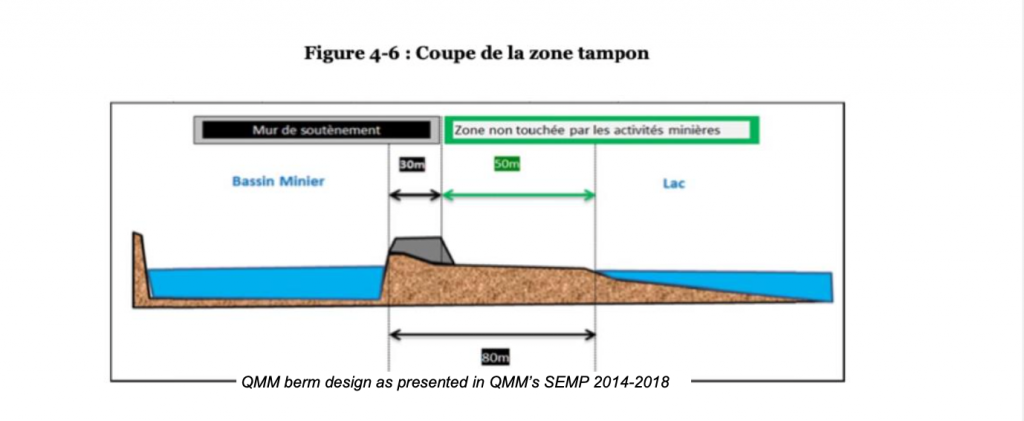
ALT UK NOTE: Whats left after the mine extracts ilmenite is reject sands or ‘mine tailings’. These tailings are put back into the mining basin. That basin is technically now a Tailings Storage Facility (TSF) . The “berm” around the TSF is therefore a mine tailings dam. It has a performance objective: to retain mining process water in the mine basin. If it does not do that it has failed. The “berms” have been constructed using reject sands, mine tailings.
ALT UK Observation: In August 2021, in written answers to questions sent by ALT UK/PWYP MG, QMM wrote: ” The mining pond is a specific unique aspect of the mineral sands mining system. This a continuously moving, controlled dam“. We have never heard of any dam described in this way.
The ICMM use the term Tailings storage Facility (TSF) in relation to implementing the new GISTM standards. See RELEVANT MINE TAILINGS DAM DEFINITIONS HERE
ALT UK Comment: It’s important to understand that QMM water data clearly demonstrates elevated uranium in the mine basin water (Swanson Memo 2019). Also, QMM water discharge monitoring report, 2021, reports cadmium and aluminium exceedances which are above Malagasy regulatory limits. The mine basin water also has an extremely low Ph (below 3 according to a 2019 study (CNRE) ) making the water highly acidic, which also effects the behaviour of the heavy metals in the pond and discharge water – hence the need to contain these waters and protect adjacent natural waterways.
ALT UK Comment: Rio Tinto/QMM’s tailings, in the form of reject sands, until recently (2018) contained quantities of monazite. The mine tailings at QMM also contain radionuclides, such as uranium, that are concentrated by the churning of sands during the extraction process (Rio Tinto, 2019; Swanson memo 2019).
Using QMM water data related to the mining basin, Swanson (2019 Memo) concluded : ” Monitoring data show that the QMM mine definitely releases more uranium into water on the site, thus creating an enhanced source of uranium to the Mandromondromotra River and Lac Ambavarano.”
ALT UK Comment: Emerman’s evaluation (2018) deemed the QMM berm structure unfit for purpose and observed that the safety criterion used by QMM for the dam (1.3) is “similar to the criterion that would be used for the design of storm drains at a shopping mall parking lot” . He also observed that “If mining basins are closed simply by filling with sand, radionuclides will be mobilised into the groundwater system and seepage will be a constant occurrence. If the mining ponds are dewatered by releasing radionuclide-enriched water into the environment without treatment, the current safety protocols and infrastructure for containment of radionuclides in the mining pond are completely irrelevant. »
In March 2019, in Rio Tinto’s “Formal response to the report entitled: Evaluation of a Buffer Zone at an Ilmenite Mine operated by Rio Tinto on the Shores of Lakes Besaroy and Ambavarano, Madagascar” sent to ALT UK, Rio Tinto confirmed (page 3): “The function of the berms between the mine pond and Lakes Besaroy and Ambavarano is to act as temporary barrier (or levee) against transmission of the mining pond water to the surrounding areas in the event of severe flooding. They are constructed from material (mainly sand or “sand tailings” as noted above) available in the area, and beyond their function as a barrier, the use of the sand is intended to facilitate post-mining rehabilitation into forest and wetland as the mining dredge moves inland away from the areas the berms are protecting. Designating them as “dams” as a semantic alternative to “berms” does not fundamentally alter the expected function and associated risks with the structures.” We certainly seek to call the structure according to its function. In this instance to prevent flow of water ie a dam.
The following excerpt from Emerman’s 2020 report Evaluation of a New Water-Quality Study of the Rio Tinto QMM Ilmenite Mine, South-eastern Madagascar appears consistent with the reported recent mine water releases to prevent overtopping and TSF failure: “Emerman (2018) calculated the annual probabilities of seepage from the basins and overtopping of the dams between the basins and the lakes to be 0.18-2.08% and 0.17-0.31%, respectively. Since, according to Rio Tinto (2019), the dams are constructed out of the mine tailings (the sands that remain after ilmenite and Zirsill have been extracted), any overtopping would be expected to destroy the dam completely because water flowing over the downstream embankment would erode away the unconsolidated tailings. Emerman deemed the probabilities of seepage and overtopping of the dams at QMM to be “unacceptably high”. (Emerman, 2018)

Rio Tinto Board member, MEGAN CLARK: offered some explanation on RT’s approach to tailings and dam management elsewhere, stating: RT asserts the important Implementation of Global Industry Standards for Tailings Management (GISTM) that Rio Tinto helped to develop through the ICMM, using our own internal standards and those of our peers in the industry. Look at how it’s going and how we are classified, and the classification scheme of our tailings facilities. We have 21 ranked as high. …etc All on track to meet the GISTM by August 2023. Part of our standards and governance on tailings is that the executives that are accountable for the safety of the tailings facilities and also for minimising social and environmental impact must have a direct line to the Board (and are meeting just this week.) …….So, the Board has had direct conversations with our sustainability committee with account executives. I share that with you to share that we take this extremely seriously we understand the consequences not just in our own business but to the extent the communities around us and we have these frameworks in management and the Board and will continue to do so….
ALT UK Comment: the refusal of Rio Tinto to acknowledge the QMM “berm” as a tailings dam, and recent events as a tailings dam failure or TSF failure, calls into question to what extent they are taking seriously a) their mine tailings management commitments under the GISTM, b) previous recommendations to strengthen the QMM berms post the 2018 overspill and dead fish event/investigation of 2019, and c) the Minister of Water’s current conditions for the release of the mine excess water. See details below.
ALT UK Comment: Although not compliant for discharging its mine process wastewater, from March 8th QMM began the release of 1 million cubic metres of mine water from its settling ponds or risked a complete collapse of the QMM dam. For this they secured an “exceptional” permission from the Malagasy water regulator, ANDEA. This accord does not exempt Rio Tinto/QMM from its responsibilities for any damage that is caused by the release and sets out a series of conditions : –
Ministry of Water Conditions on QMM include: “QMM engages to compensate and/or compensate promptly for any possible disturbances caused by the release and restore the affected places (action and decontamination). Follow and execute the recommendations of the committee: 1) the possibility of creating buffer zones for the storage and treatment of water before release in order to limit the volume of water to be released (anticipation of possible risks); 2) keep the committee informed of each release (volume released, duration of release); 3) strengthen the protection of the site: solid and waterproof berms (preventive measure of the risks)” … and adds: “ that a release of water without authorization of the ANDEA is an illicit activity and incurs the administrative sanctions without prejudice of the possible lawsuit”. SEE AUTHORISATION HERE
Additionally, QMM was required by the Minister to take charge of drinking water for the affected population. And, since fishing was prohibited until the situation is clarified, QMM is asked by the Ministry to ensure the daily food of these families. Reports are not confirming that the latter has happened in a satisfactory way. We understand this was the reason for the occupation of the Town Hall in Ft Dauphin by villagers.
4. RIGHTS AND REMEDY
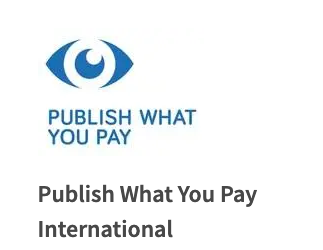
1.42.03 – 1.44.02: Joe Bardwell of Publish What You Pay (PWYP)
You might have guessed I am asking a question about Madagascar and I think the quantity of questions we are getting today about Madagascar shows how severe the situation is there. In response to the first question we had, you framed this as an issue around inequality and that villages are begrudged because some people are doing better. But I think Yvonne highlighted that this is about villages and rural people there are feeling worse off than when your mine came. They have lost lands, undermined food security, lost livelihoods, health effects and they put this down to the water in the area. Villages say they can’t feed themselves maintain a necessary income enjoy their health or pay for their children’s education. 63% of 368 villagers interviewed as part of that PWYP report have submitted complaints about this and they relate to the water quality, land losses, for example, and 90% of these say they have received no response from the company or the monitoring body. So, I have a couple of questions: How does the impact of the QMM mine reconcile with Rio Tinto’s sustainability, water and human rights commitments; I think a common thread today has been about righting wrongs. How do you intend to right these wrongs? When will Rio Tinto address villagers’ grievances? And what remedial measures will you put in place to compensate for the losses they have experienced?
SEE THE PUBLISH WHAT YOU PAY MADAGASCAR 2022 STUDY BRIEFING HERE (full report to follow)

1.44.02 – 1.45.36: S Thomson:/Rio Tinto:
As you say we’ve had quite a number of questions on Madagascar and as I said at the outset, I’m not sure precisely when your report was published but I think I only received it yesterday so I haven’t had a chance to fully digest it. But I think at the appropriate time Sinead it would be good if we could set up a meeting with PWYP once we have actually read and analysed the report. But I would say we are already taking steps to try and improve the conditions for the local communities, we are currently building fresh water treatment plants for them within their villagers and as we move towards a net zero mine in QMM we will be replacing all our fossil fuel fired power with renewable energy and as part of that we will be supplying electricity to two of the communities as well, in addition to the 80,000 citizens that we provide with power in Ft Dauphin. So, there are certainly steps being taken but as I have acknowledged we absolutely have to find ways of being more transparent, and working closely with the communities and I think we have made over the last 12 months very significant progress but I think we all acknowledge there is more work to be do.
ALT UK Comment: The Chair did not answer the question regarding addressing grievances, remediation and righting wrongs. The provision of energy has nothing to do with compensating for the lost livelihoods and lands of the villagers over more than ten years, all of which have resulted in their being unable to feed themselves or support their families – especially support their children’s education. Villagers’ traditional subsistence agriculture, fishing and animal husbandry practices have supported their families for generations. To be deprived of these livelihoods, or see them decline with nothing to take their place has created enormous hardship. This is all a direct impact of the mine on available land and natural resources. The water quality is also a direct impact of the mine. These are issues provided for the in the QMM project framework agreements and must be accounted for and remedy assured.
6.DRINKING WATER PROVISION
2.10 50: Patrick Scott, Individual shareholder:
My question is another relating to Madagascar and I want to ask can Rio Tinto explain its delay in responding to earlier requests for mine affected communities in Mandena, especially when these demands reflect the company’s sustainability water and other international commitments? And will Rio Tinto ensure drinkable water is available to all of the frontline affected communities and if yes, when?

2.11.37 S Thompson/Rio Tinto:
So do we have timing for delivery of the project Sinead? As I mentioned in the responses to several questions on Madagascar, we are currently developing clean water supplies for three communities closest to the mine and Sinead tells me those will be delivered in the third quarter.
ALT UK Comment: The Chair did not answer the question: can RT explain its delay in providing drinking water? Both local, national and international actors have been demanding drinking water for a number of years. It has taken over three years to respond to formal, written requests for water provision (local and international requests in writing) . We welcome the new potable water project from the Ministry of Water, funded by QMM to the tune of 500,000 dollars, which is targeted to reach approximately 85% of the population. We would also welcome to see any pre-project consultation documents available that can show how that target has been calculated and why the choice of the technology, how it will be maintained, etc
ALT UK Observation : Had potable water been provided at the start of the mining project, as would have been appropriate, – or even three years ago when the uranium in water finding prompted international experts’ demands for potable water access to the communities, then emergency supplies would not be needed when there is a mine tailings dam failure, – when the mine is required to seek special permissions to release its process water because it is not legally compliant, and to have to truck in drinking water to the communities.
2.12.07 Patrick Scott replies:
I would say well August, obviously, better late than never but that’s another 4 months so you have to be mindful of the fact that in those remaining 4 months they are still not getting proper drinkable water.
2.12.25: S Thomson/Rio Tinto :
Again as I mentioned earlier, I think it was the first question, whilst we were releasing the surplus water from the mine site into the environment during the extreme weather events, that we had in February and March, we were trucking fresh water into those communities as a precautionary measure to make sure they wouldn’t be impacted by any adverse consequences of that matter – of course we were also sampling the water every single day with community members present whilst we sampled the water, and happily there were no adverse consequences of releasing that water so far as we could determine from that sampling . August is the date we will be delivering a permanent solution rather than a temporary one.
ALT UK Comment: The Ministry of Water and the authorities have not yet made any public pronouncements about the outcome of their studies on the QMM water release of 1 million cubic metres of mine wastewater and the dead fish, and they are continuing to conduct further investigations on the ground.
ALT UK Comment: Swanson has suggested some Near-Term Actions to address the current release issues at QMM: see HERE

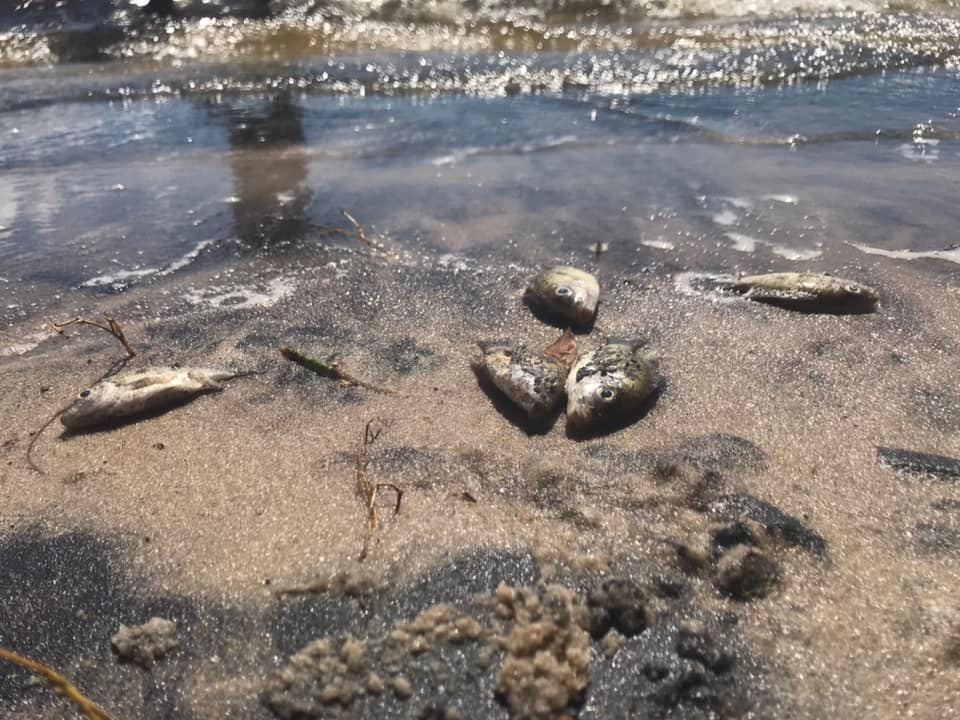
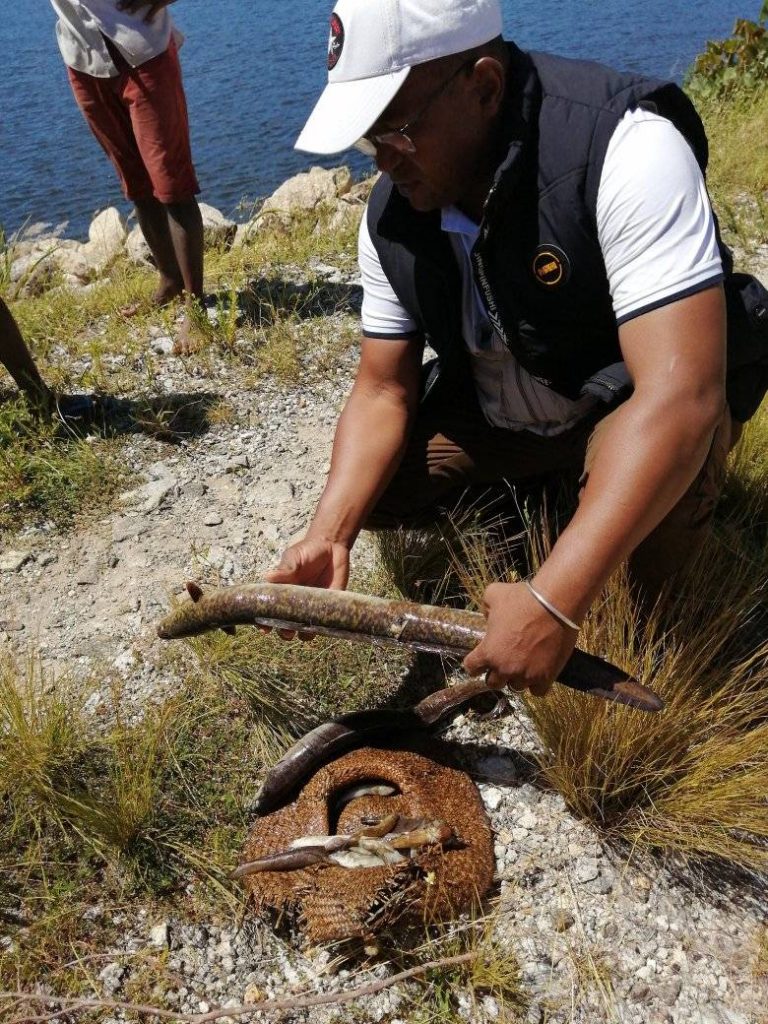
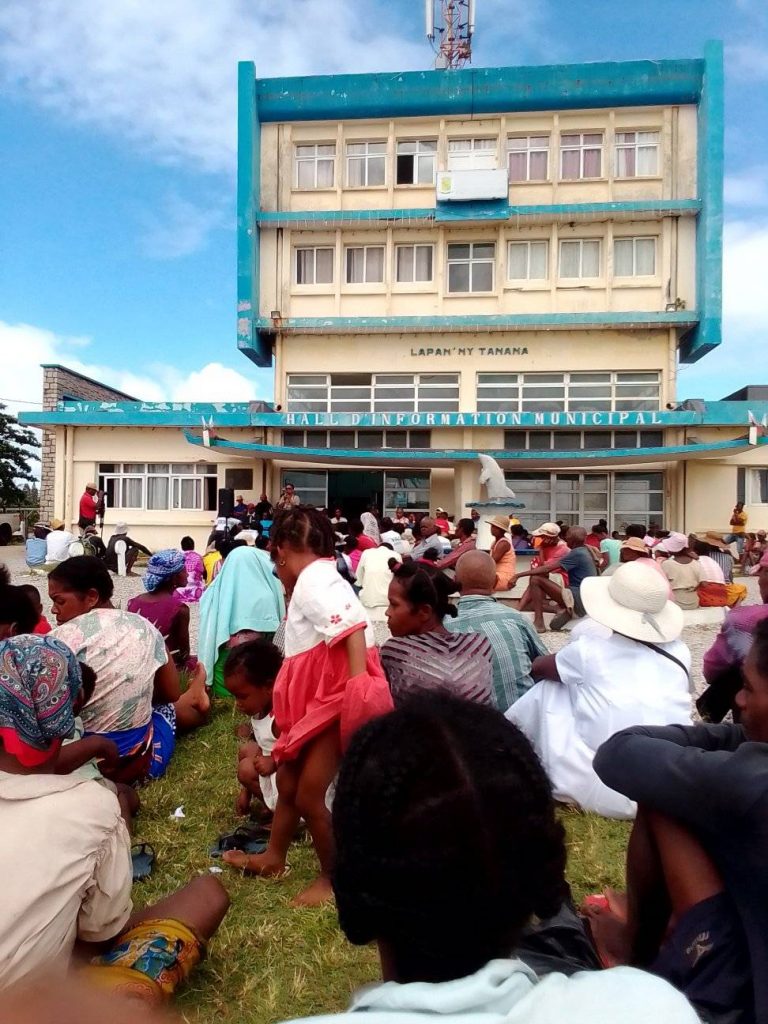
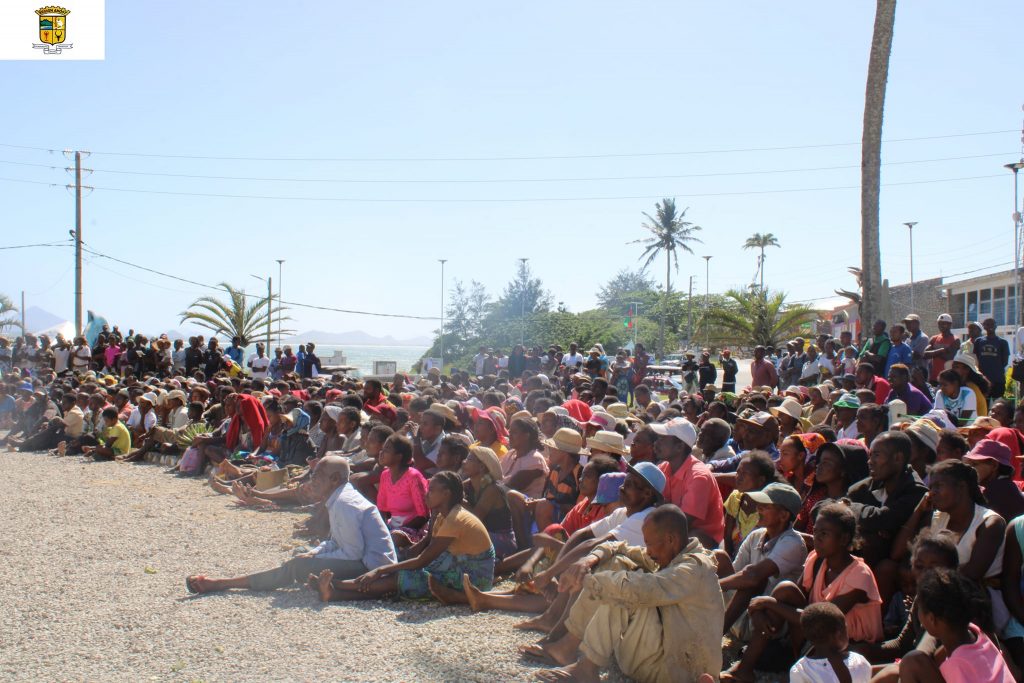
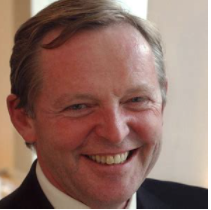
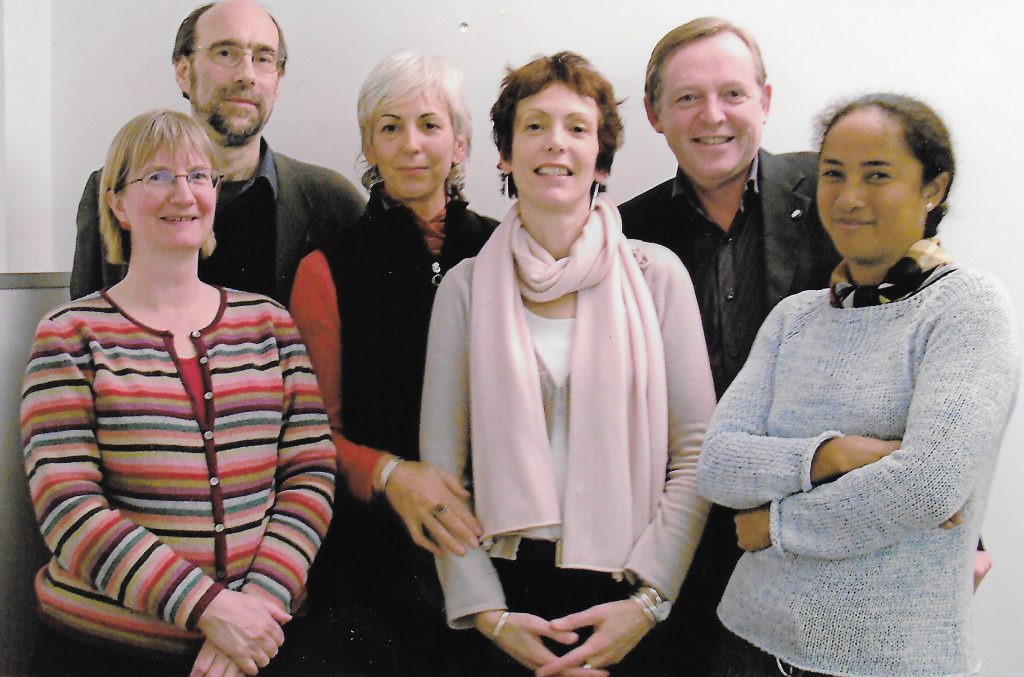
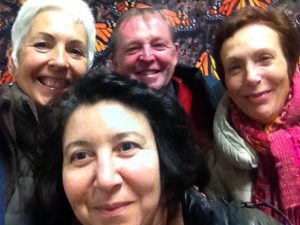
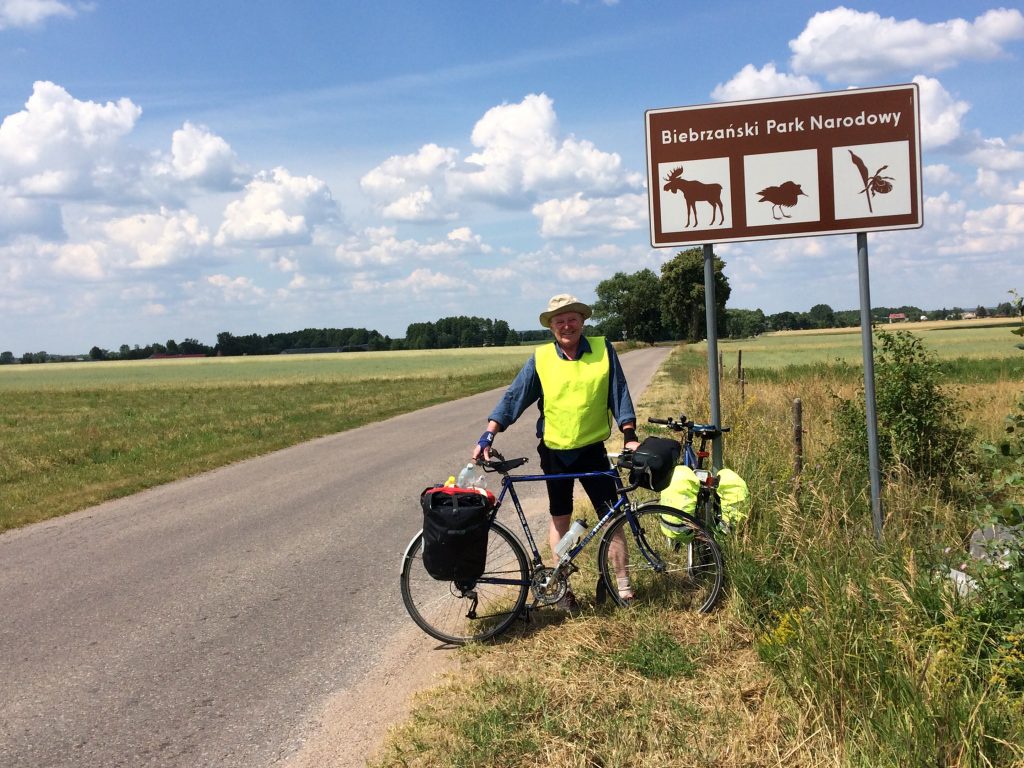
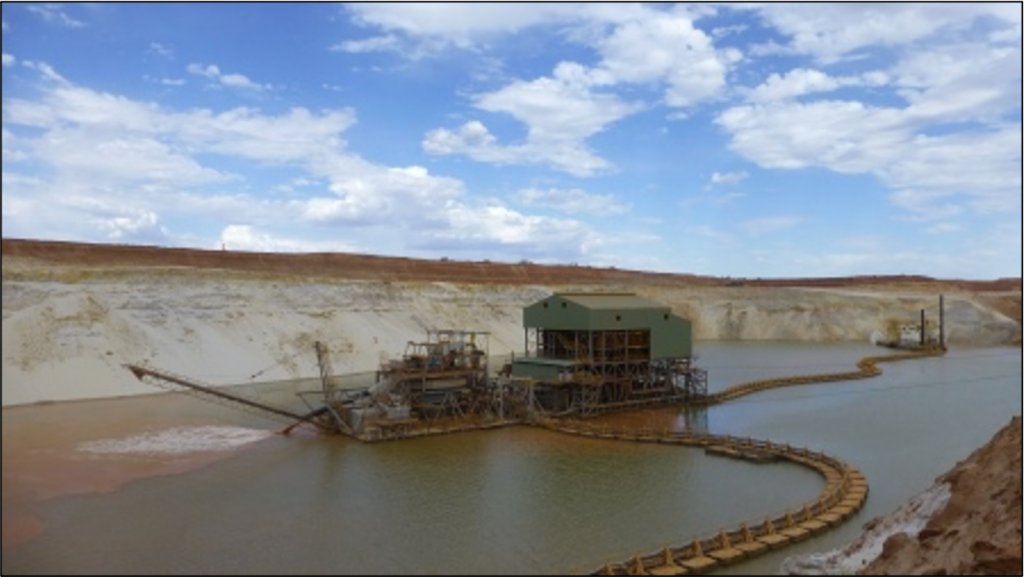
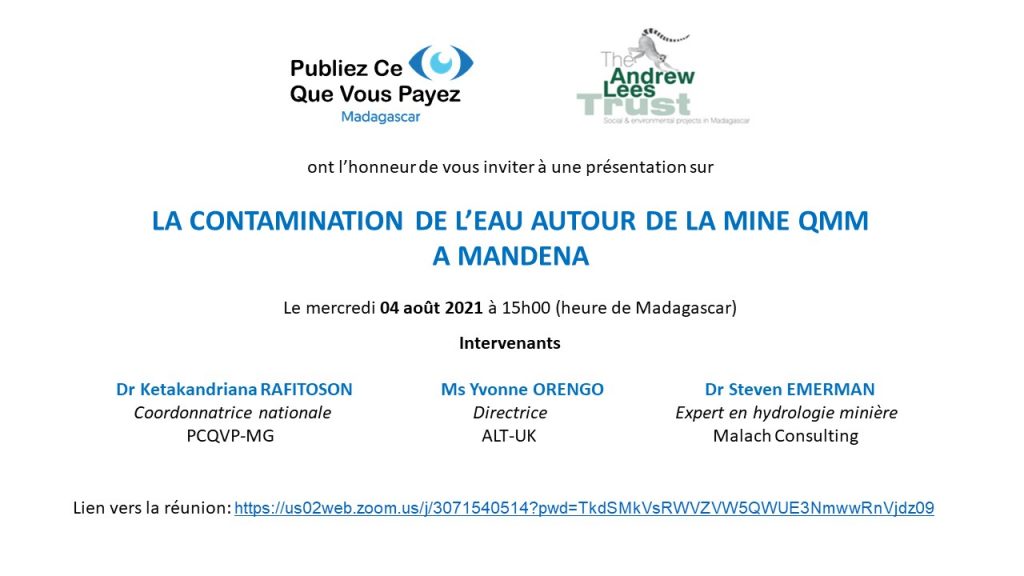
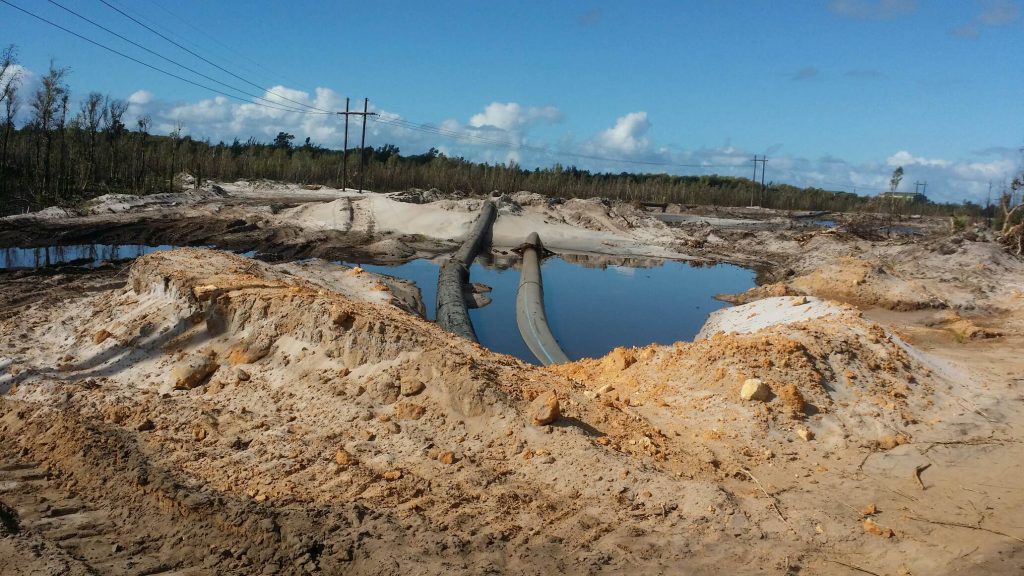
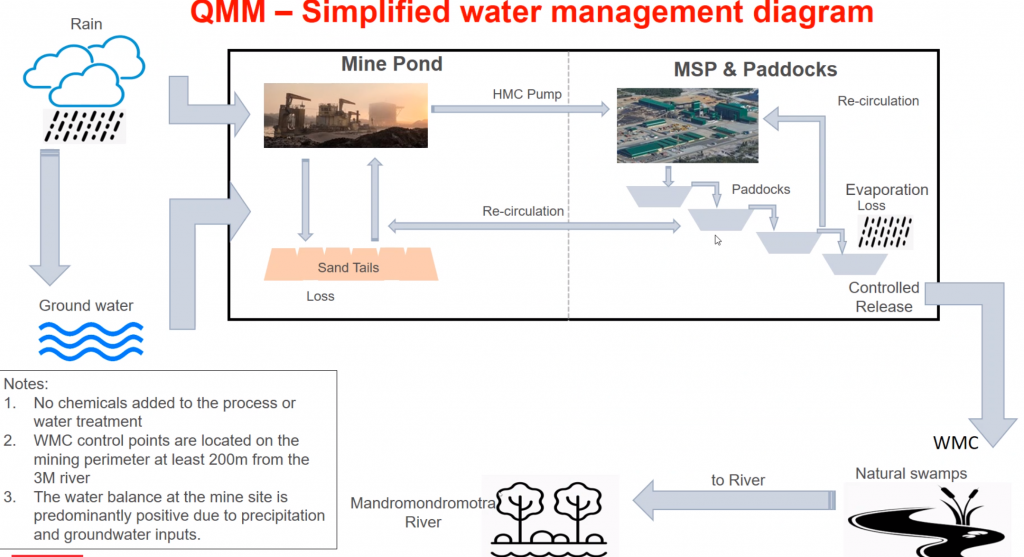
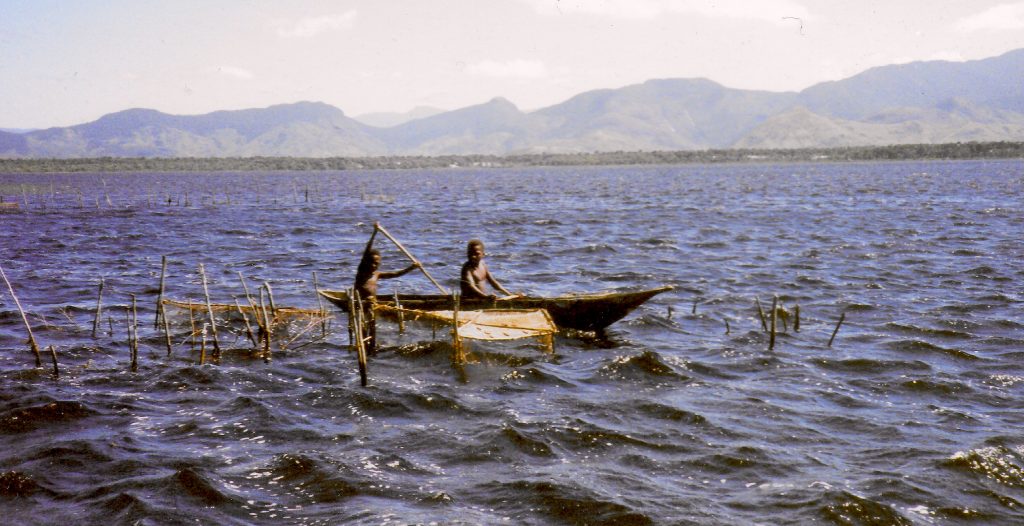
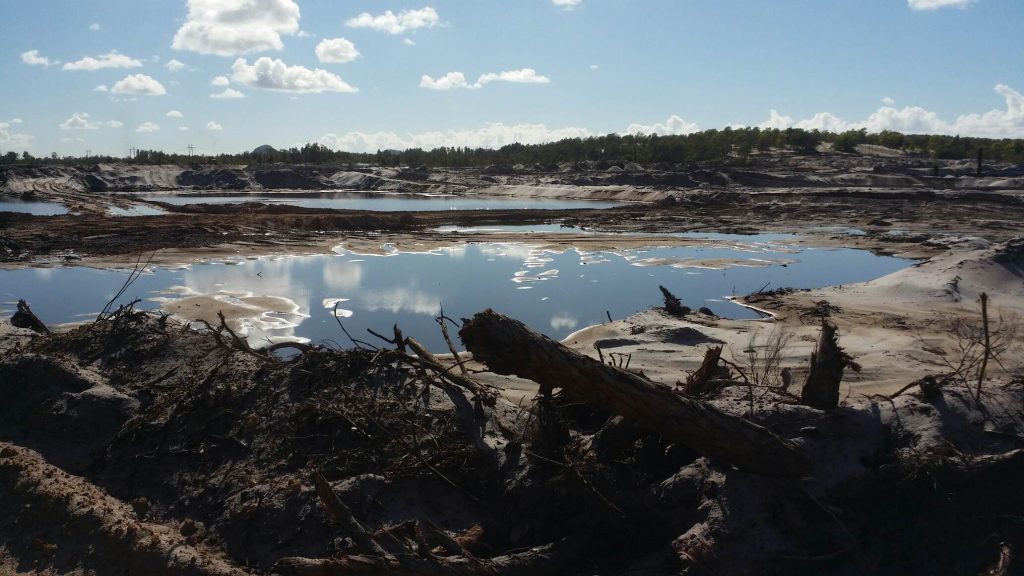
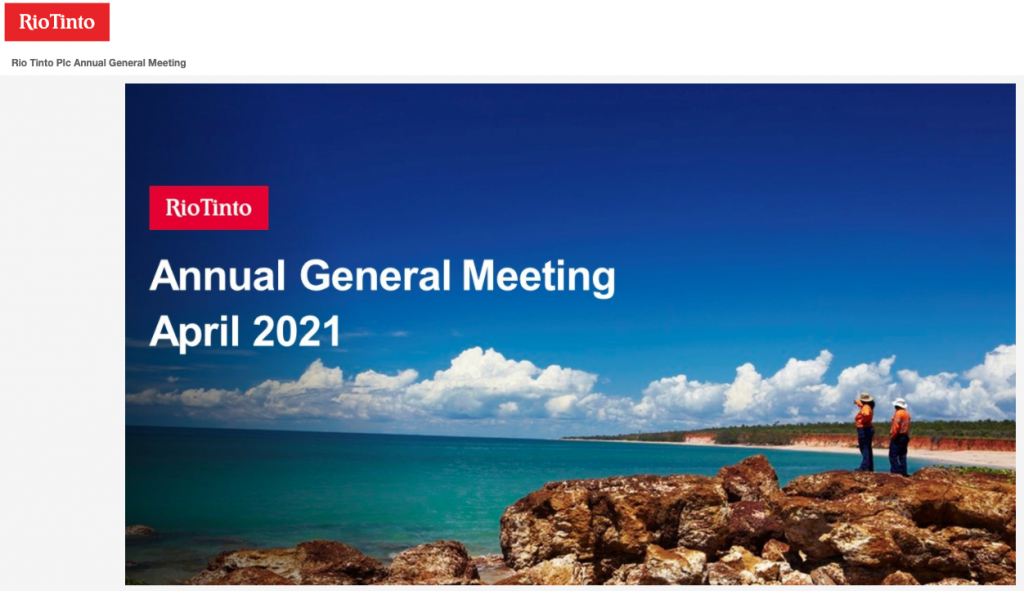
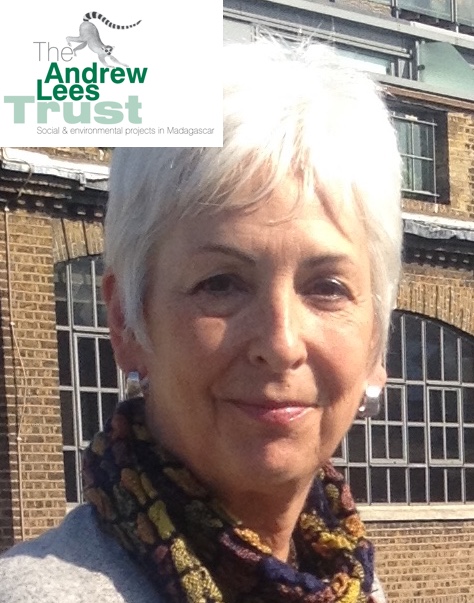 Yvonne Orengo of the Andrew Lees Trust (ALT UK)
Yvonne Orengo of the Andrew Lees Trust (ALT UK) 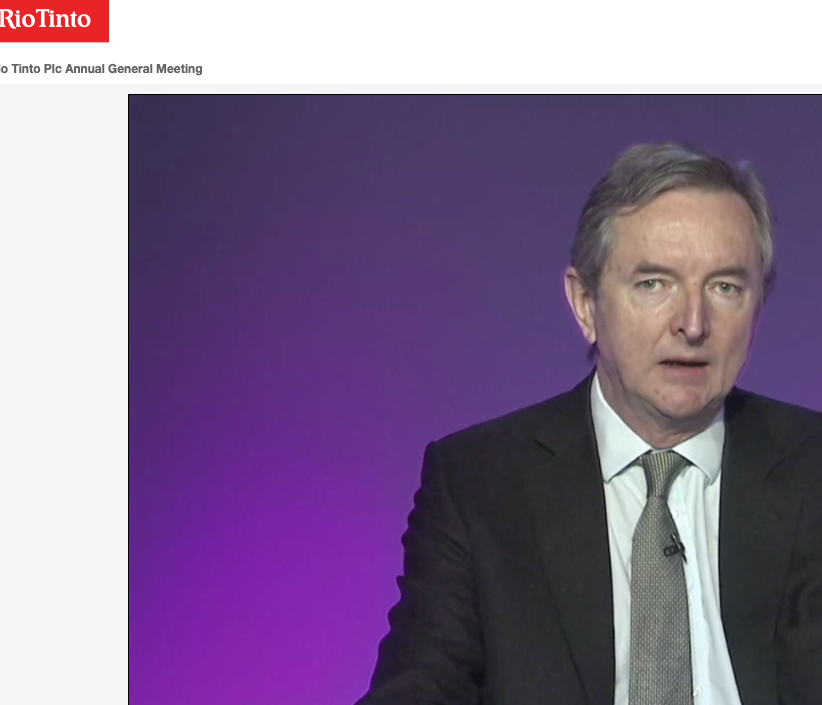 Simon Thompson, Chair of Rio Tinto, replied:
Simon Thompson, Chair of Rio Tinto, replied:
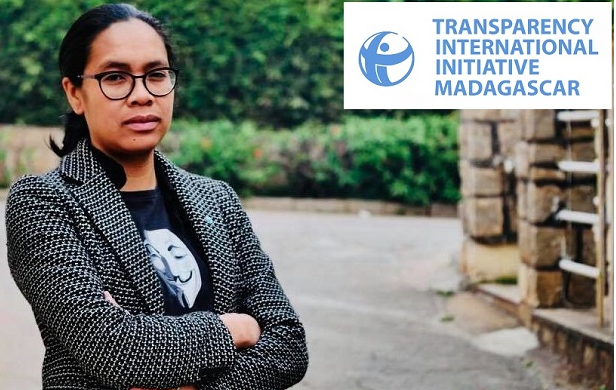 Ketakandriana Rafitoson of Publish what You pay Madagascar (PWYP MG) asked :
Ketakandriana Rafitoson of Publish what You pay Madagascar (PWYP MG) asked :